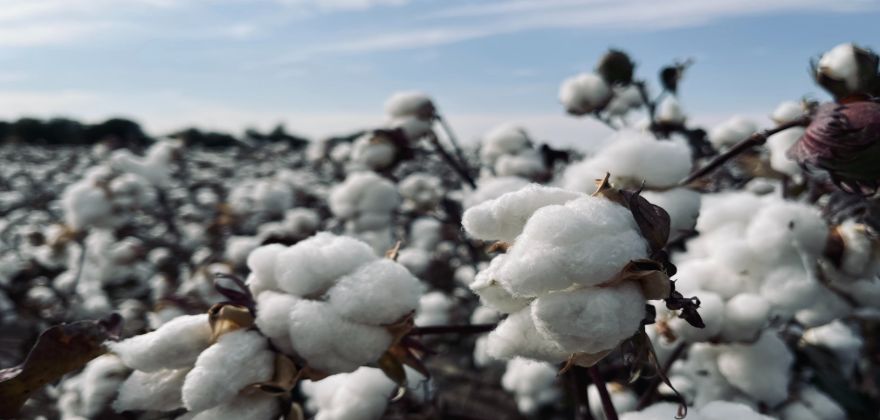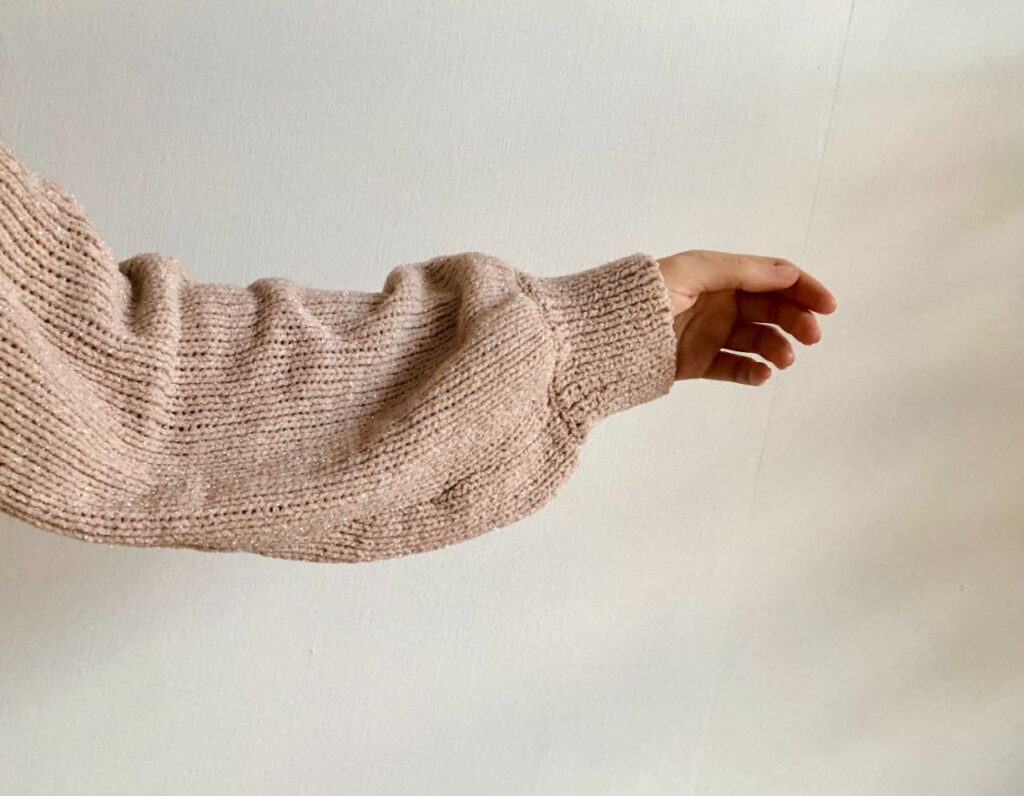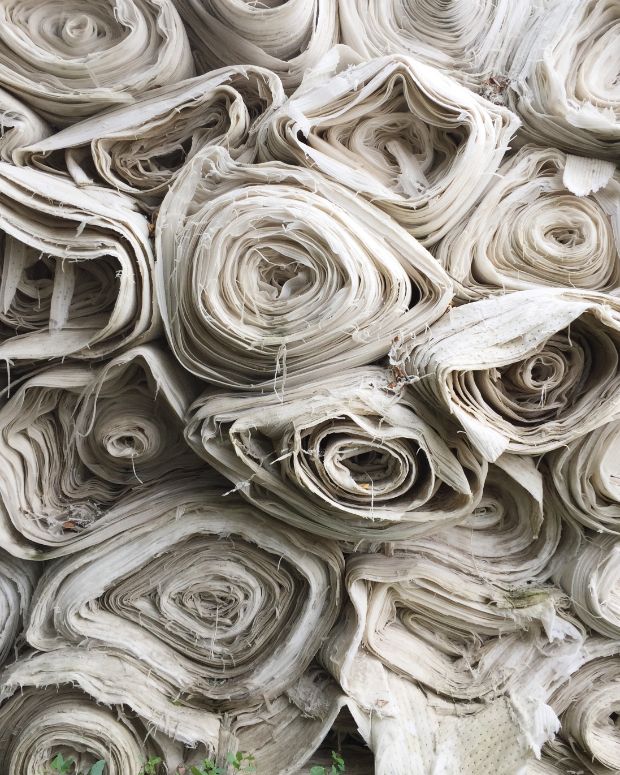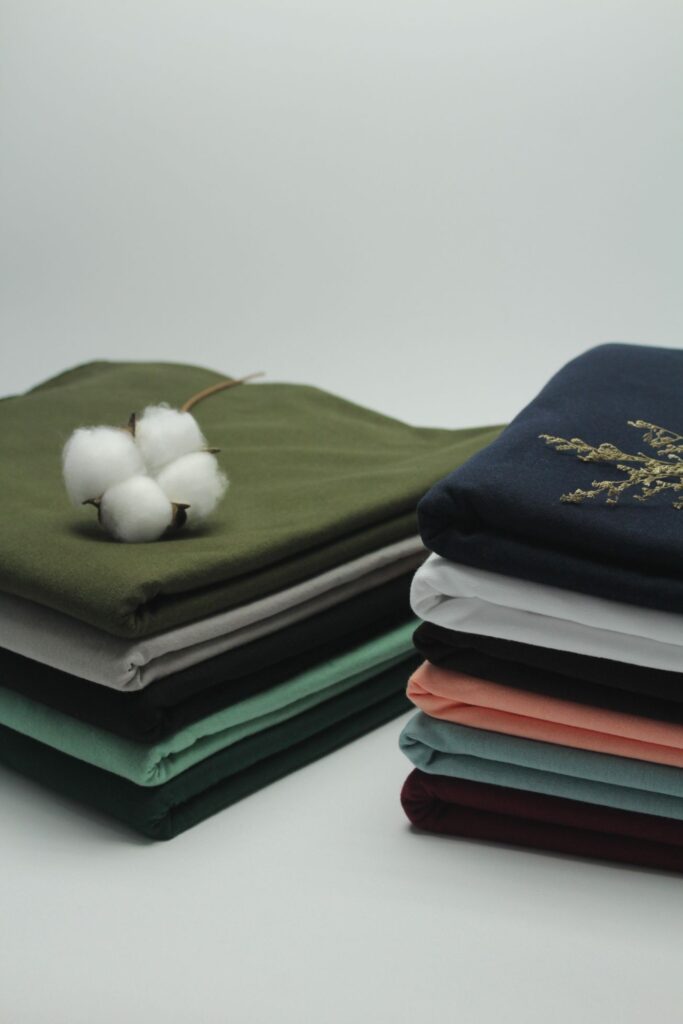Cotton Vs Polyester: Which Is Better For Outdoors?

The two most common fabrics used today are polyester and cotton. The majority of people are aware that polyester is a man-made, synthetic fiber, whereas cotton is a natural fiber. It can be simple to assume that these materials are similar because they are utilized in many of the same applications. Which of the two is superior and what makes them different? Continue reading for more details if you’re curious about polyester and cotton.
What Is Cotton?
Natural cotton is breathable, hypoallergenic, and comfortable to wear. All over the world, it has been employed for thousands of years in the manufacture of textiles.
Its adaptability is what makes it so popular. Upholstery, clothing, bedding, and carpets can all be made of cotton. It continues to be a go-to material for clothing manufacturers and home sewers because it is versatile, malleable, and simple to work with.
There are three different fiber lengths available that can be used in a variety of products. High-quality fabrics are made from long-staple fibers; everyday clothing is made from medium-staple fibers, and carpets and inferior goods are made from short-staple fibers.
Pros
- Breathable
- Absorbs moisture
- Hypoallergenic
- Strong and durable
- Versatile
- Soft next to the skin
Cons
- Does not dry quickly
- Prone to wrinkles
- Shrinks
- Wears out over time
What Is Polyester?
Synthetic fiber polyester is made from petroleum. It is used for many of the same products as cotton but is lighter and stronger. In the 1970s, polyester, a 20th-century invention, was made available as a substitute for cotton as a fabric for clothing.
Polyester is a strong, long-lasting material because it is artificial. Due to its ability to quickly dry and wick away moisture, it is a preferred fabric for outdoor and activity wear.
Pros
- Durable
- Lightweight
- Easy to care for
- Crease-resistant
- Dries quickly
- Moisture-wicking
Cons
- Feels like plastic when worn
- Can be cold next to the skin
- Does not breathe
- Melts under too much heat
- Is not sustainable
The Properties Of Polyester And Cotton
Comfortable and breathable, cotton. It is gentle and organic. All of these characteristics make cotton the natural fiber of choice for nonwoven hygiene products, from feminine pads to baby care and adult incontinence. Cotton is also hypoallergenic.
But cotton has a wider range of characteristics that make it suitable for many nonwoven applications. Cotton is regarded as having a moderate to an above-average degree of strength in the world of fibers.
Cotton has a strength (tenacity) of 3.0-5.0 grams/denier when it is dry. This fiber is distinctive in that it becomes stronger when wet, increasing to 3.3–6.0 grams/denier. Under typical temperature and humidity conditions, cotton naturally regains 8.5% of its moisture.
Additionally, the distribution of its lengths is heterogeneous. Last but not least, cotton continues to be relevant and well-liked in a contemporary era characterized by environmental concerns because it is both sustainable and biodegradable.
Hydrophobicity describes polyester. As a result, polyester fabrics don’t absorb sweat or other liquids, leaving the wearer with a damp, clammy feeling. The level of wicking in polyester fibers is typically low.
Polyester has a greater ability to stretch and is stronger than cotton. From 2.5 grams per denier to 9.5 grams per denier, fiber strength can be found.
Polyester use is frowned upon by consumers who care about the environment. Polyester is not thought to be sustainable and is not biodegradable because it is a man-made fiber made from petroleum-based products.
The Breathability Of Polyester And Cotton

The very breathable fabric is cotton. When a fabric is said to be breathable, it means that it can let air pass through its fibers and allow moisture from the body to evaporate. It is one of the characteristics that has made the fabric a crucial component of clothing production for centuries.
Cotton is a great material for undergarments because it allows the skin next to it to breathe. Cotton does have a drawback. Although the fabric is breathable, it does not wick away moisture. Cotton tends to stay wet because it absorbs water.
It may take a while for the fabric to dry, depending on its thickness. In colder climates, this could be disastrous. Hypothermia can occur if a fabric dries slowly in a colder environment.
Polyester is made from petroleum and is impermeable. As a result, clothing may become uncomfortable in warm weather. This is due to the retention of body moisture, or sweat, next to the skin. This may make the fabric clingy and wet, which would be uncomfortable for the wearer.
Polyester dries quickly because it’s synthetic. It doesn’t absorb liquids, which explains why. They persist on the surface before evaporation causes them to disappear. A clear benefit of outerwear or rainwear is that it is water-resistant.
The Durability Of Polyester And Cotton
Although in different ways, cotton and polyester are both strong fabrics. The various weaves of cotton fabric are what gives it its strength. Cotton fabrics come in a variety of durability levels, including twill.
This depends on the weave’s density or the number of fibers per inch. The fabric is more durable the heavier the cotton weave. It’s interesting to note that cotton is strongest when wet, allowing it to withstand numerous hot water washes.
Also soft and susceptible to damage is cotton. Once more, the weave is to blame for this. In contrast to denim, a cotton lawn won’t be as durable.
Given their biodegradability, cotton fibers will eventually disintegrate. Even cotton that is heavier will deteriorate. Cotton’s enemies are the sun and time. Cotton will deteriorate if either is used in excess.
Extremely durable is polyester. The fibers are resistant to water, stains, and creases because they are made of plastic. Because they don’t degrade, they are strong and able to withstand a great deal of wear and tear.
The durability of polyester can be a problem when it comes to disposal. Like any plastic, it cannot be composted and will rot in a landfill for a very long time.
The Warmth Of Polyester And Cotton
Cotton is available in a variety of weights and variations to suit shifting seasonal temperatures. This fabric is excellent for layering. When worn under another garment as a layer, even the lightest summer top can be worn during the winter.
It is the best option for cooler climates because it can be worn in layers. The fabric’s ability to breathe allows air to move between the layers, forming tiny pockets of insulation. You’ll be very warm if you dress in undergarments, a t-shirt, a shirt, and possibly a sweater.
The heavier weave of some cotton varieties indicates that they are intended to be a winter weight. Consider flannel or twill. Both are warm cotton fabrics that are made from cotton.
Unfortunately, there is such a thing as being too warm. Sweat is removed from the body by cotton, which absorbs it. However, the fabric continues to be damp. This results in cold, wet clothing being next to your body, which makes you feel cold.
Since polyester is not permeable to air, it cannot act as insulation. The fact that it can make you perspire makes it bad to have it right next to your skin. It’s bad for your body to have moisture next to your skin in colder climates. You’ll become colder and eventually freeze.
Up to a point, the fabric can keep you warm. A popular fabric used in jackets and hoodies is fleece, a polyester-based fabric. Although it does keep heat close to your body, fleece is not a very effective insulator on its own.
It’s also one of the few polyesters that aren’t waterproof. Fleece will lose heat when it comes into contact with cold air or winter rain, making you feel chilly and wet. Fleece needs layers of other clothing made of cotton or wool underneath it to be a successful cold-weather fabric.

In colder climates, polyester works best when used to make outerwear. You can stay warm by wearing a polyester shell underneath your winter clothing or even your fleece jacket.
The Softness Of Polyester And Cotton
Because cotton is derived from the cotton plant’s fluffy fibers, it is already soft. This softness makes cotton clothing, especially when it’s made entirely of cotton, soft to the touch and even softer to wear.
Though not all cotton is created to be fluffy and soft. Numerous different kinds of fabric fall under the umbrella term “cotton.” The weave you select, which ranges from a lightweight cotton voile to a heavy-weight twill, will influence the degree of softness you get.
Polyester is a synthetic fabric created from man-made fibers. It can feel somewhat like plastic due to the petroleum base. When compared to natural fiber, it is not as soft.
But over time, the fabric has changed. Polyester production has advanced significantly thanks to modern technology, making it more comfortable to wear.
The Thickness Of Polyester And Cotton
Depending on the fabric’s weave and the product it is intended for, polyester and cotton are both available in a variety of thicknesses. Despite having varying qualities, both materials are used to create a variety of products, from lightweight to heavy-duty.
The term “denier” refers to a material or yarn’s thickness. The term “denier” describes the number of threads in an inch of fabric. A thin weave like cotton voile would be a fabric with a low denier. A fabric with a heavier weave, like corduroy, would have a higher denier.
Although the two fabrics have a similar thread count, they differ in terms of weight. In comparison to heavy-weight cotton fabric, the thicker polyester fabric will feel lighter.
The Moisture-wicking Of Polyester And Cotton
Natural fibers make up some of the best fabrics for wicking moisture away. The only exceptions to this are fabrics made of cotton and polyester.
It’s odd that polyester, a synthetic material, performs better at moisture-wicking than cotton of two. Being able to let sweat evaporate makes it the perfect addition to activewear.
It doesn’t wick away odors, however, which is one of the drawbacks of polyester. Although it dries quickly, the smell from your most recent workout remains. Its need for timely and frequent washing makes it a fabric.
Cotton does not absorb moisture. In some ways, this is preferable to having moisture wicked away because it absorbs it. You can stay cool because the absorption of liquid accelerates its removal from the body.
The clothing becomes drenched because it retains moisture. Although it may sound uncomfortable, wearing a shirt that has been covered in sweat can actually keep you cool in hot weather.
The Shrinking Of Polyester And Cotton
Polyester resists shrinking as a result of its synthetic properties. This makes it a preferred material for things that require frequent washing. However, a hot wash is not something it enjoys. Polyester reacts poorly to heat. It can melt because, in essence, it is plastic.
Famous for its propensity to shrink is cotton. Always, the first wash and dry results in the greatest shrinkage. Because of this, people used to buy jeans one size larger in the past to account for shrinkage. This is especially true of denim.
Nowadays, cotton fabric shrinkage is less of a problem. The shrinking nightmare has been lessened by modern techniques and by adding polyester or stretch fiber to cotton fabrics.

The Costs Of Polyester And Cotton
There are various weights and qualities of cotton. The cost you pay is influenced by the various weaves and cotton types used. The price of the fabric increases with the quality, strength, and durability of the fibers used.
The most expensive types of cotton are typically those with long staples. Long fibers produce a fine, strong, and high-quality fabric that is perfect for bedding and pricey clothing. Egyptian and Pima cotton, both of which are regarded as high-end textiles, are examples of long-fibered cotton.
The manufacture of carpets and lower-quality goods uses short-staple cotton. The resulting fabric is less expensive because the quality is lower.
Although its actual price is affected by both the popularity of the fabric at the time and that of cotton, polyester tends to be less expensive than most cotton. It has its highs and lows, but on the whole, it is less expensive than its cousin made of natural fiber.
A polyester is a common option due to its crease- and easy-care qualities. Polyester is a more affordable option when compared to the cost of good-quality cotton.
The Care And Maintenance Of Polyester And Cotton
Polyester is more practical than cotton in terms of cleaning. Polyester dries quickly and resists creasing. It repels water and resists stains well. Polyester also doesn’t require ironing before use and dries quickly in the air. Your electric bill will go down if you spend less time ironing and drying clothes.
There is a small drawback to it. It can retain odors because it is made of synthetic fibers. The removal of odors is a little more difficult than that of dirt and stains in a wash. especially if the item has been sitting forgotten at the bottom of the washer basket for a few days.
Washing polyester frequently and as soon as possible is essential to keeping it in good condition and preventing odors.
When washing polyester, there are a few considerations to make. It dislikes boiling water or washing in hot water. It can’t take too much spinning either. If handled roughly, the fabric puckers and pills.
Conversely, cotton wrinkles easily and requires ironing after each wash. It takes a while to dry, so you must either run your dryer for a long time or hang your clothes to dry for a full day. The fabric is easily stained, necessitating the use of stain removers or even a lengthy soak.
Polyester is more difficult to clean than cotton. The fabric can be deodorized more quickly because it can withstand hotter water temperatures. Cotton can be washed with items that have zips because it is less likely to snag on other clothing. Considering that it is stronger when wet, a vigorous spin cycle won’t harm it.
Read More:



